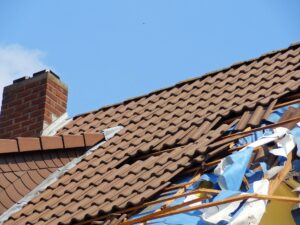
As a roofing contractor, you are often the first phone call a homeowner makes after they’ve witnessed the devastation of their property after a storm or fire. In the midst of the chaos, you are the one who has to deal with an emotional client and a fact-finding insurance adjustor at the same time. Every move you make is magnified. Every decision is scrutinized. There is no room for error. And, there are plenty of potential pitfalls along the way.
How Home Insurance Companies Investigate Accident Claims
At first glance, insurance claims sound like a simple process: investigate, determine repair costs, submit a check, raise insurance rates. Done. In the real world, however, an insurance claim can turn into a mess in a relatively short period.When an insurance company receives a claim, the first action is to investigate the damage on site. Insurance adjustors are sent to survey the extent and nature of the damage. Although many homeowners perceive insurance adjustors to be mere agents looking out for the interests of the company, their designation is to assess the situation and provide accurate feedback.It’s at this point where you, the roofing contractor, come in. Since you are the expert in roof damage and repair, both the homeowner and the adjustor will need your assistance in identifying the full extent of the storm damage. Most owners will call you in advance and request a complete inspection before you meet with the agent. You have the opportunity to observe the roof with no distraction. Your role is identical to the adjustor’s role. You are to report the results to the homeowner in a manner that is honest and consistent.
Estimates & Project Management
Upon approval from the Insurance Company, both the insurance adjustor and the roofing contractor will write up an estimate. Be aware that your estimate may drastically differ from the estimate given by the insurance adjustor. The reason for this is that some items require immediate attention to reduce further damage to the house.For instance, if there is a caved-in roof section, the first item on the list may include tarps, decking, and underlayment to cover a hole. Your estimate, however, will contain the bill in full including parts, labor, fees, and other costs.Most insurance companies will submit payment for expenses either incrementally or per order through each phase of reconstruction. Carriers will either send the check to the homeowner or send it directly to you. You, in turn, will report all expenses and send invoices and receipts for records.
The Role of Mortgage Companies
As if working with insurance companies wasn’t enough, mortgage companies also have a stake in the process. If the homeowner has a mortgage or lien on the home, then by law all checks sent to either the homeowner or you must have the mortgage company’s name on them. This task has the potential to add several head-cracking steps to get the checks endorsed and the funds released.
Submitting a Job Completion Certificate
Once you have completed the job or a phase within the project, you must sign and present a certificate of completion. You’ll send this to the insurance company with a complete invoice of all expenses up to and including completion. The homeowner will also receive a copy of the bill. If you are required to send an invoice after completing each task, you will receive funds for the next task once the invoice is received and approved.
Contracts with Homeowners
Rarely will you find a haven for illegal and ethical breaches like you will the first 48 hours after a major storm such as a tornado or a hurricane. Your competition grows by 400% from the storm chasers – roofing companies that follow storms around, survey the damage and offer sub-par products and services to helpless clients who are still in shock after the storm passed just hours ago. One of the classic schemes of these companies is to show up at someone’s door unannounced to offer a free inspection with a hidden contract that binds the client and then get the roof built as fast as possible to get to the next house ASAP.The practice of binding a customer to a roofing project via a ‘free inspection’ is frowned upon. There is nothing illegal, however, about requiring a signed contract to perform an inspection. Where you will distinguish yourself, however, is in your honesty and transparency. You and your company’s reputation as a local roofing business will depend on it. As stunned as your clients are at the loss of their roof, they will always remember the quality of your work and the way that you treated them.
State Compliance
Some states require that roofers go through a process of certification before getting a license to perform storm inspections and repair. Almost all states have roofing codes and regulations that apply to wind and rain and fire damage. Check your state to determine what steps you have to take to become certified in storm or fire roof damage. Failure to be properly certified can result in loss of license or stiff fines and penalties.
Safety on the Job
A damaged roof creates a volatile environment. A severely damaged roof can be life threatening or cause injury. It’s for this reason that safety must always be number one on your list of priorities. Neither you nor your crew know what you’re walking into the first time you’re on-site.Proper training and equipment are required to perform all inspections and begin the work of restoring the roof. Your employees must be licensed, insured, and bonded. Your clients should only come on site if the area around the damage is safe. Never put your client in harm’s way and never trust their self-proclaimed expertise. The safety of everyone involved depends on your ability to declare an area to be hazardous.
